Microsoft Azure Security Technologies (AZ-500)
Microsoft Defender for Cloud
Implement Just in time VM access
In this article, we will guide you through implementing Just-in-Time (JIT) access for virtual machines. JIT access is a security feature that temporarily opens VM management ports (such as SSH on port 22 or RDP on port 3389) only when needed, drastically reducing the overall attack surface.
Overview
Exposing management ports to the internet poses security risks. With JIT access, these ports remain closed by default and are only opened for a limited duration for approved IP addresses. This approach resembles Privileged Identity Management, ensuring that access is temporary and pre-approved. The key benefits include:
- Minimized risk through reduced open attack surfaces.
- Granular control over privileged access.
- Comprehensive audit trails that log every access request, approval, and active timeframe.
Note
Regularly review and update your access policies to align with evolving security requirements.
How JIT Access Works
The workflow for implementing JIT access is straightforward and consists of four main steps:
- Onboard Virtual Machines: Enroll your VMs in the JIT system.
- Define Policies: Configure policies outlining which management ports to open, allowed source IPs, protocols, and maximum access duration.
- Request and Approve Access: Users request access, and administrators approve the request for a short period.
- Monitor Access: All access requests and activity are logged for auditing and alert purposes in case of unauthorized or suspicious activities.
Policy Configuration
When setting up JIT, you need to establish clear policies that include:
- Configuring allowed ports and protocols.
- Specifying the permitted IP addresses or ranges.
- Defining the maximum duration for access.
Integrating with Azure Active Directory (Azure AD) and leveraging Role-Based Access Control (RBAC) can add an extra layer of security by managing sign-ins and controlling VM access.
Demonstration through the Azure Portal
Below, we walk through the configuration process for JIT access using the Azure Portal.
Step 1: Verify Virtual Machine Network Settings
Assume you have a Linux VM with port 22 exposed to the internet. Begin by reviewing its Network Security Group (NSG) settings.
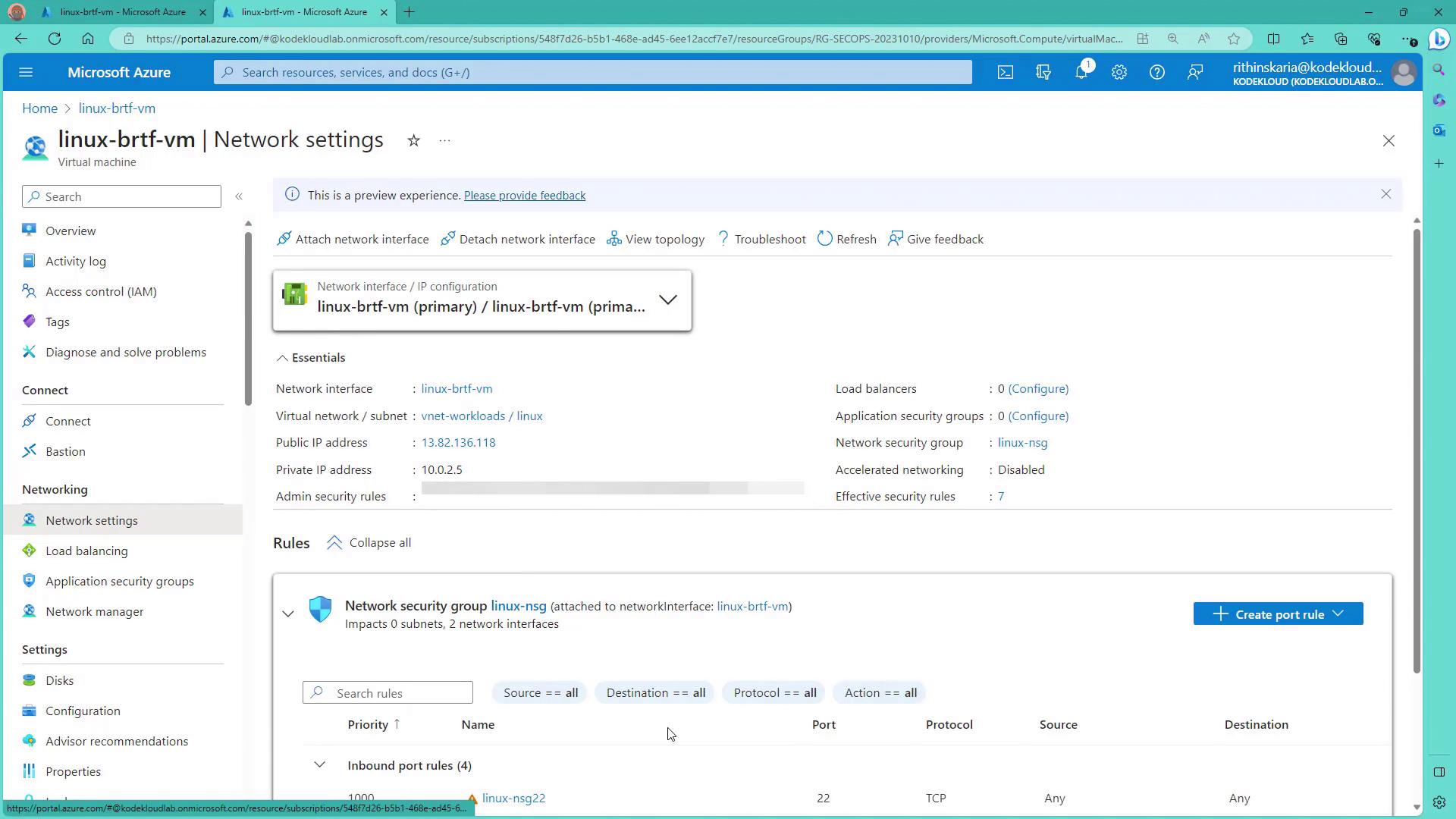
Step 2: Access Microsoft Defender for Cloud
Next, navigate to Microsoft Defender for Cloud to explore the JIT access settings. Look for the "Workload Protection" quick link, which, after a brief load, displays JIT VM access details.
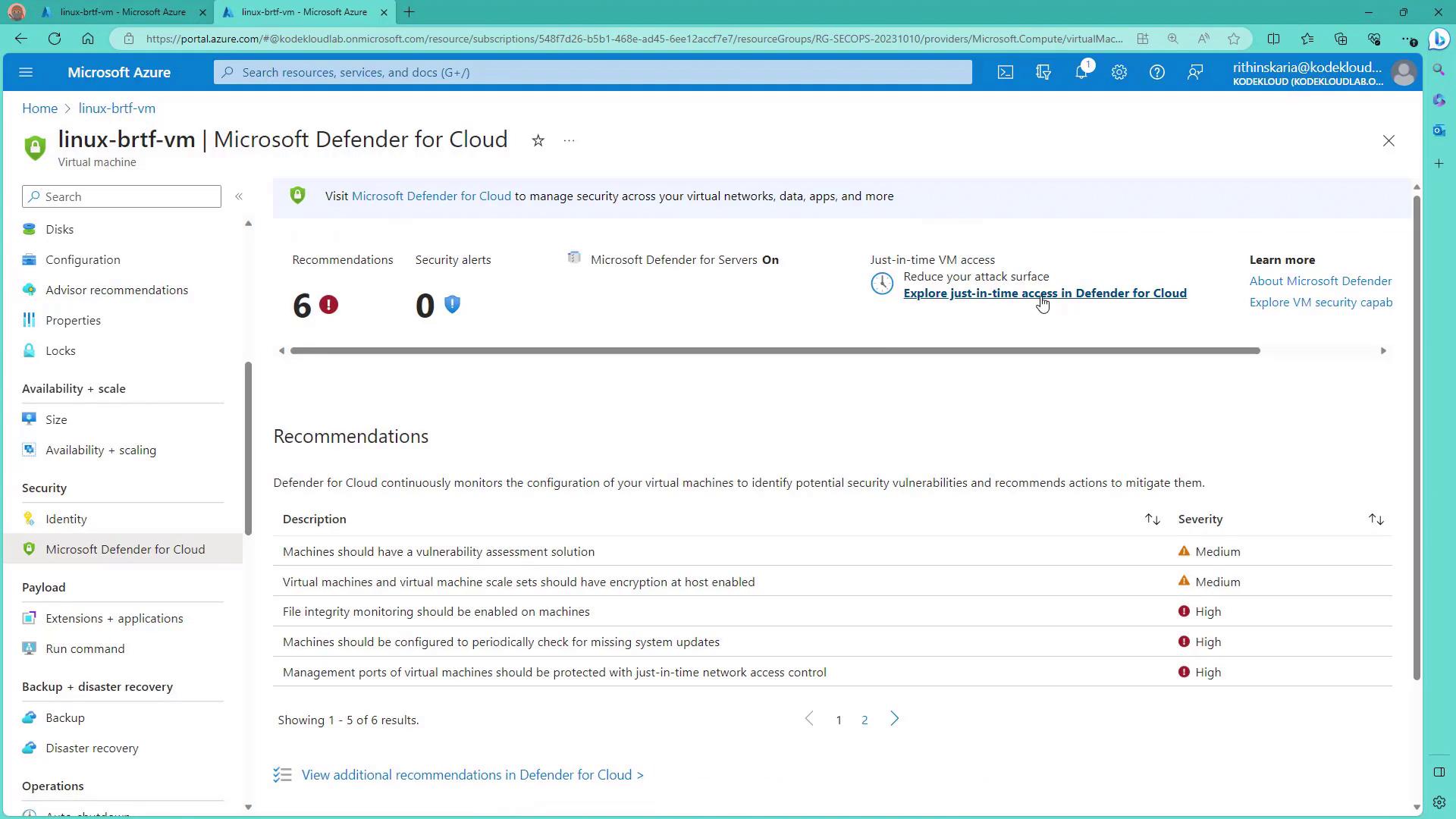
In some cases, you might see a message indicating that no machines are currently configured with JIT. This occurs when the VM without a public IP is considered secure. However, for machines with NSGs allowing access to management ports, enabling JIT is highly recommended.
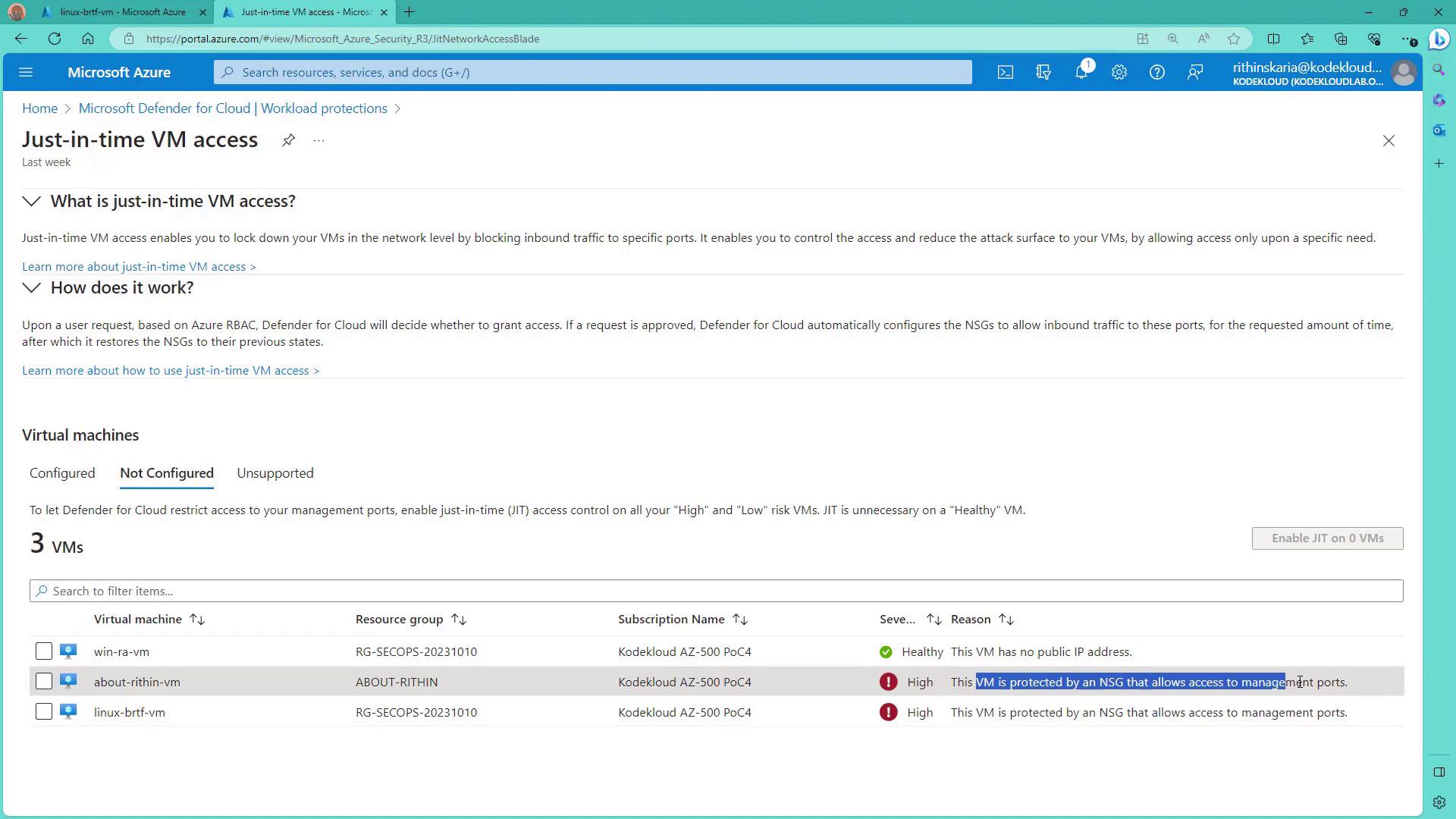
Step 3: Configure JIT Access
Select the virtual machine that requires JIT access configuration. For a Linux VM, you might want to remove any unnecessary port configurations on port 22 before adding a secure rule.
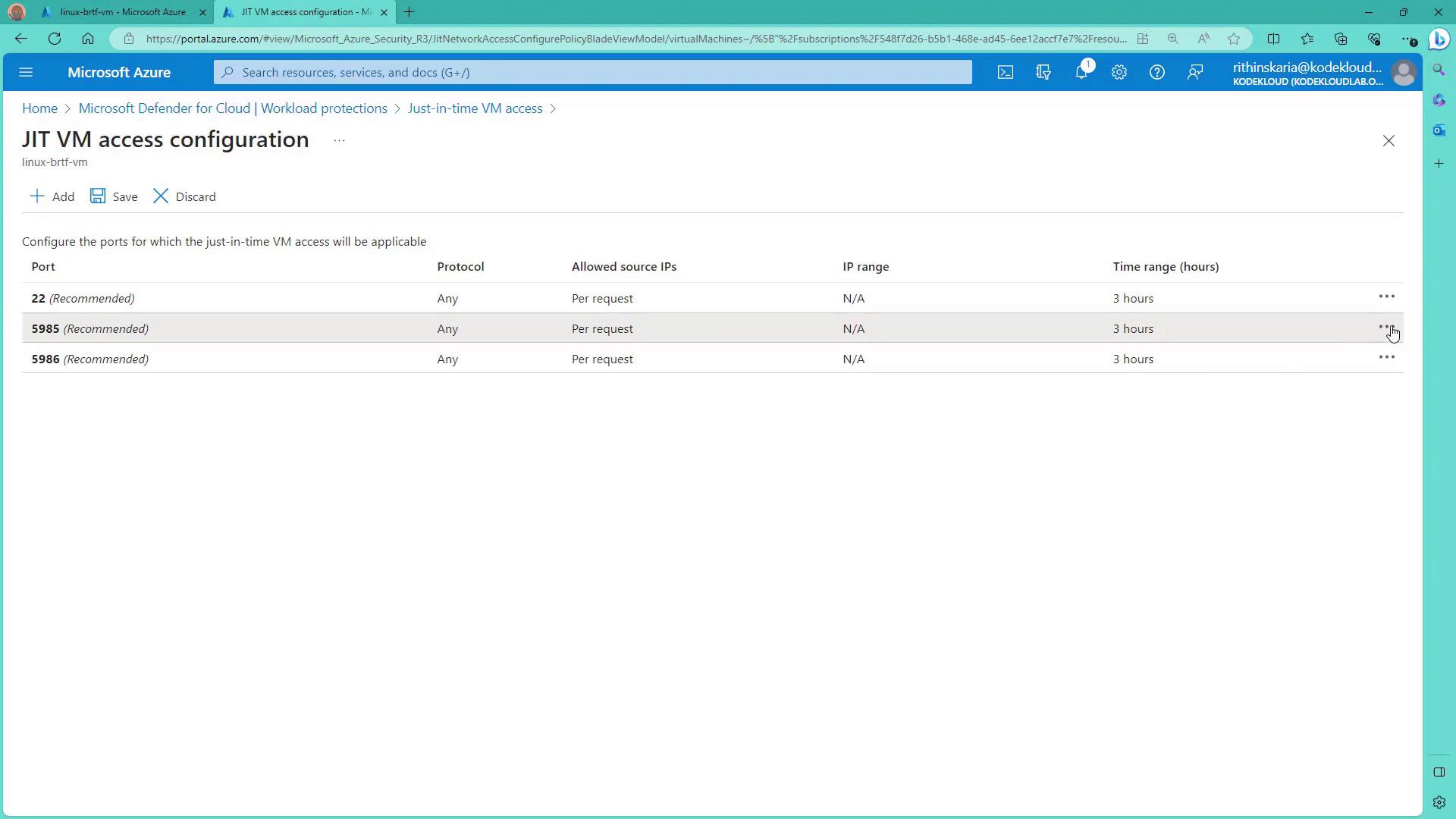
When setting up the rule, use the following configuration details:
- Port: 22 with TCP as the protocol.
- Maximum Request Time: 1 hour (after which access is automatically revoked).
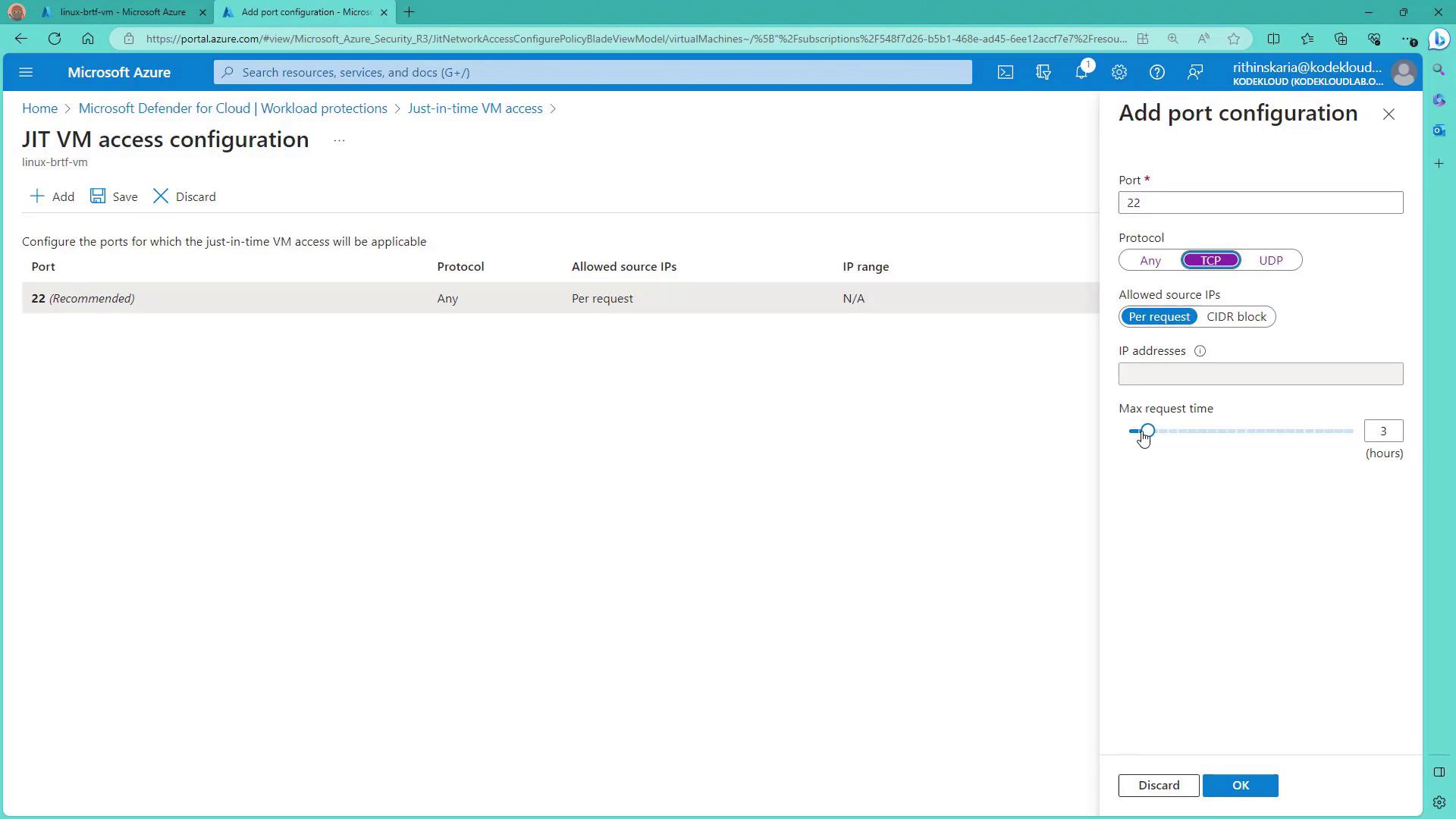
After saving the settings, JIT access is enabled for the selected VM.
Warning
Always verify that the correct ports and IP addresses are configured to prevent unintended access.
Step 4: Request and Use JIT Access
To access your VM, follow these steps:
- Navigate to the VM in the Azure Portal.
- Click the "Connect" option.
- In the connection portal, review the configuration for port 22 and use the request access option.
- Select the appropriate IP address (for example, your local machine's IP) and request access.
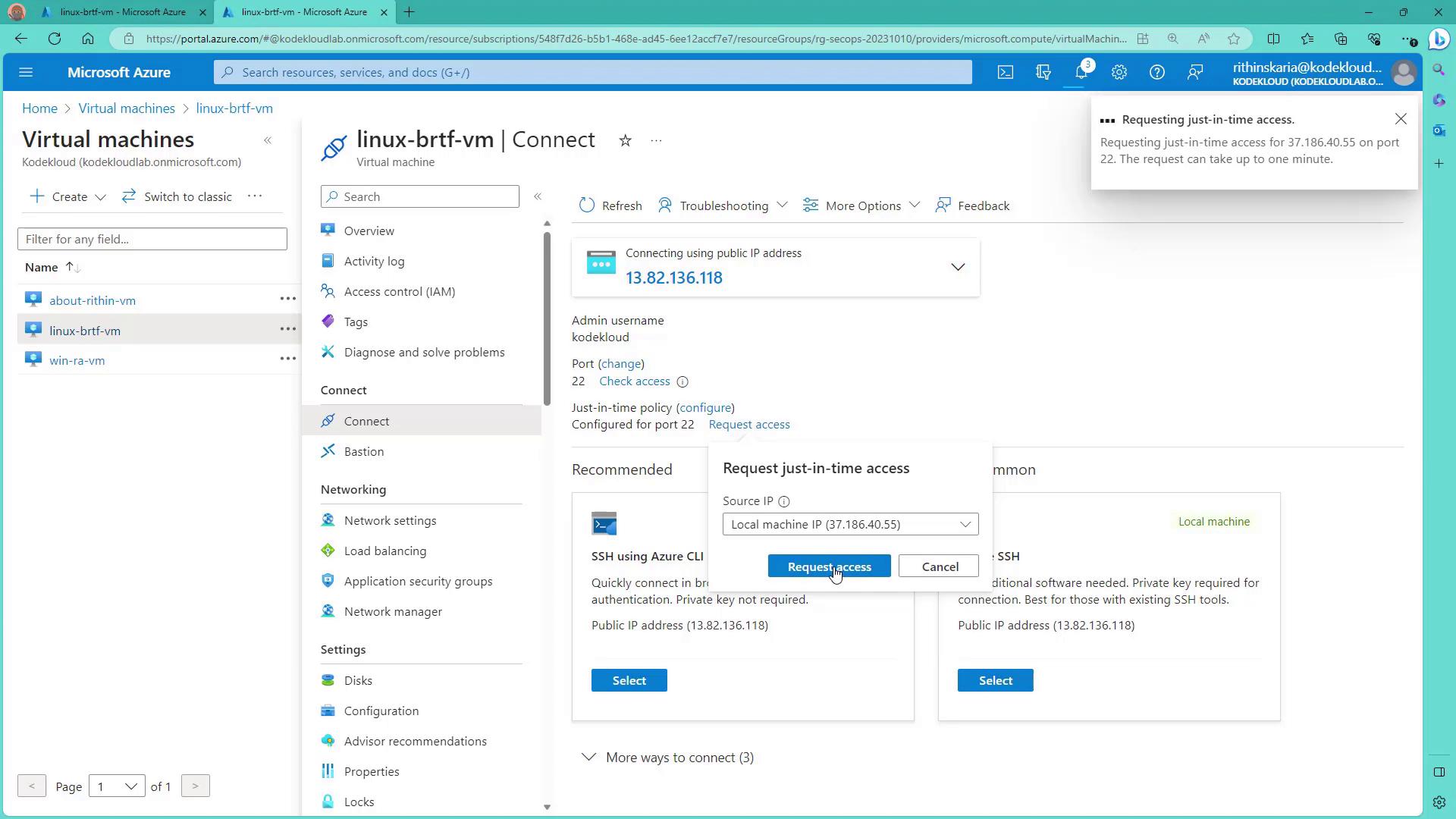
Once your request is approved, connect using an SSH command from your terminal. For example:
ssh kodekloud@linux-brtf-vm
After entering your credentials, you are connected to your Linux VM. Remember that the access is valid only for the duration assigned by the JIT policy (in this case, one hour). After the duration expires, you must request access again.
Below is a sample terminal output indicating a successful connection:
Expanded Security Maintenance for Applications is not enabled.
0 updates can be applied immediately.
Enable ESM Apps to receive additional future security updates.
See https://ubuntu.com/esm or run: sudo pro status
The list of available updates is more than a week old.
To check for new updates run: sudo apt update
The programs included with the Ubuntu system are free software;
the exact distribution terms for each program are described in the
individual files in /usr/share/doc/*/copyright.
Ubuntu comes with ABSOLUTELY NO WARRANTY, to the extent permitted by
applicable law.
To run a command as administrator (user "root"), use "sudo <command>".
See "man sudo_root" for details.
kodekloud@linux-brtf-vm:~$
This output confirms that you have successfully connected to your Linux VM via JIT access.
Transition to Microsoft Sentinel
Following the successful JIT configuration in Microsoft Defender for Cloud, the next step is to enhance monitoring and security management by transitioning to Microsoft Sentinel.
In summary, this guide has explored how to configure and use JIT access to secure your virtual machines by granting temporary, controlled access to management ports. Regular policy reviews and detailed logging help ensure that your systems remain secure while allowing necessary administrative tasks.
For further reading and best practices, check out the following links:
Happy securing!
Watch Video
Watch video content